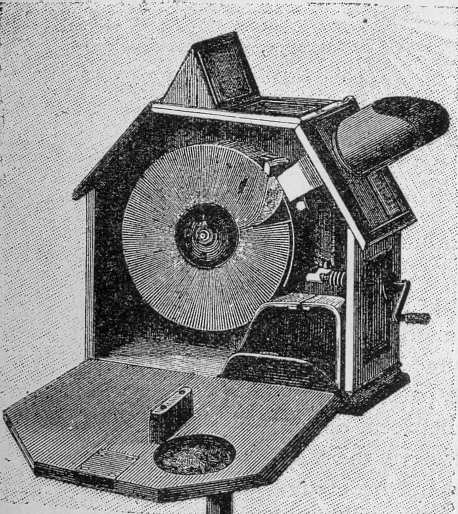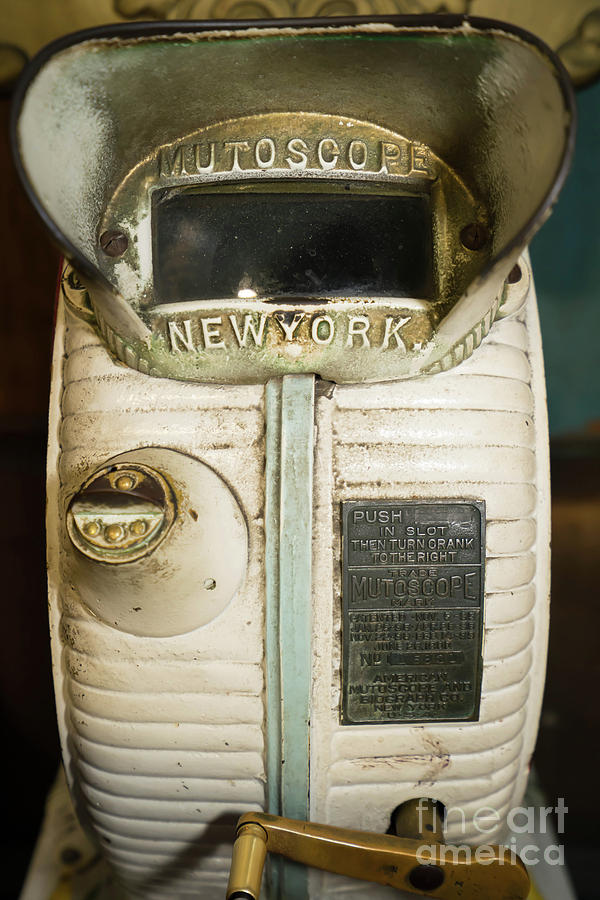Mutoscope 1894 - early visual media
Mutoscope was one of the earliest forms of visual media and was widely popular in the late 19th and early 20th centuries. It was a machine that displayed flip-book-style animation by using a series of still images that were rapidly flipped in succession. The Mutoscope was also referred to as the “What the Butler Saw” machine, a reference to its often risqué and suggestive content.
The Mutoscope was invented by Herman Casler in 1894 and was later improved by fellow inventor William Kennedy Laurie Dickson. The machine consisted of a cabinet that housed a rotating drum containing a series of photographic images. When the user cranked a handle on the side of the machine, the drum would spin and the images would appear to move, creating a short animation.
The Mutoscope was initially used as a novelty item in arcades, penny arcades, and other public spaces. It quickly became popular due to its novelty and entertainment value, and was soon being used to display a wide variety of content, including musical performances, sporting events, and even pornographic content.
One of the major advantages of the Mutoscope was that it was able to display moving images without the need for projection equipment or a screen. This made it a convenient and accessible form of entertainment, as it could be easily set up in a variety of locations and required only a small amount of space.
However, despite its popularity, the Mutoscope faced competition from new forms of visual media, including motion pictures and early television. By the mid-20th century, the Mutoscope had largely fallen out of use and became a nostalgic memory of a bygone era.
Despite its decline in popularity, the Mutoscope has had a lasting impact on the development of visual media. Its concept of rapidly flipping images in succession was later refined and developed into modern animation techniques. The Mutoscope is also credited with paving the way for the development of early motion picture and television technologies, as well as inspiring the development of other flip-book style animation devices, such as the View-Master.
Today, the Mutoscope is remembered as a fascinating piece of early visual media and an important part of cultural history. It is also highly sought after by collectors and is considered a valuable antique. Some original Mutoscopes can still be found in museums and private collections, and they continue to fascinate and entertain people with their simple, yet captivating, animation.
In conclusion, the Mutoscope was one of the earliest forms of visual media and played a significant role in the development of modern animation and motion picture technology. Despite its decline in popularity, it remains an important part of cultural history and continues to inspire and entertain people today. The Mutoscope serves as a reminder of the ingenuity and creativity of early inventors and the impact that their innovations have had on modern society.

.jpg/800px-Mutoscope%2C_1899_(bis).jpg)




Comments
Post a Comment